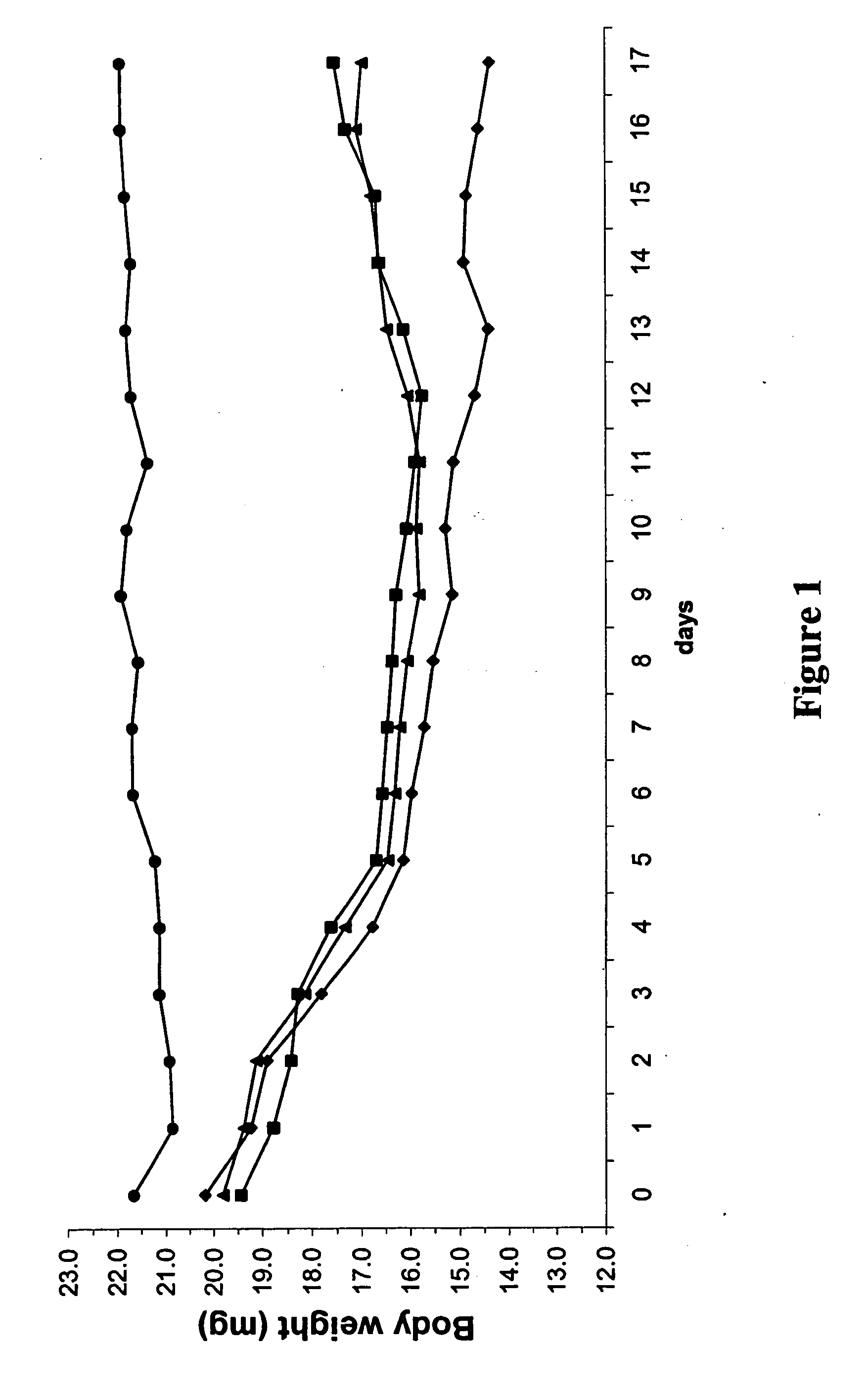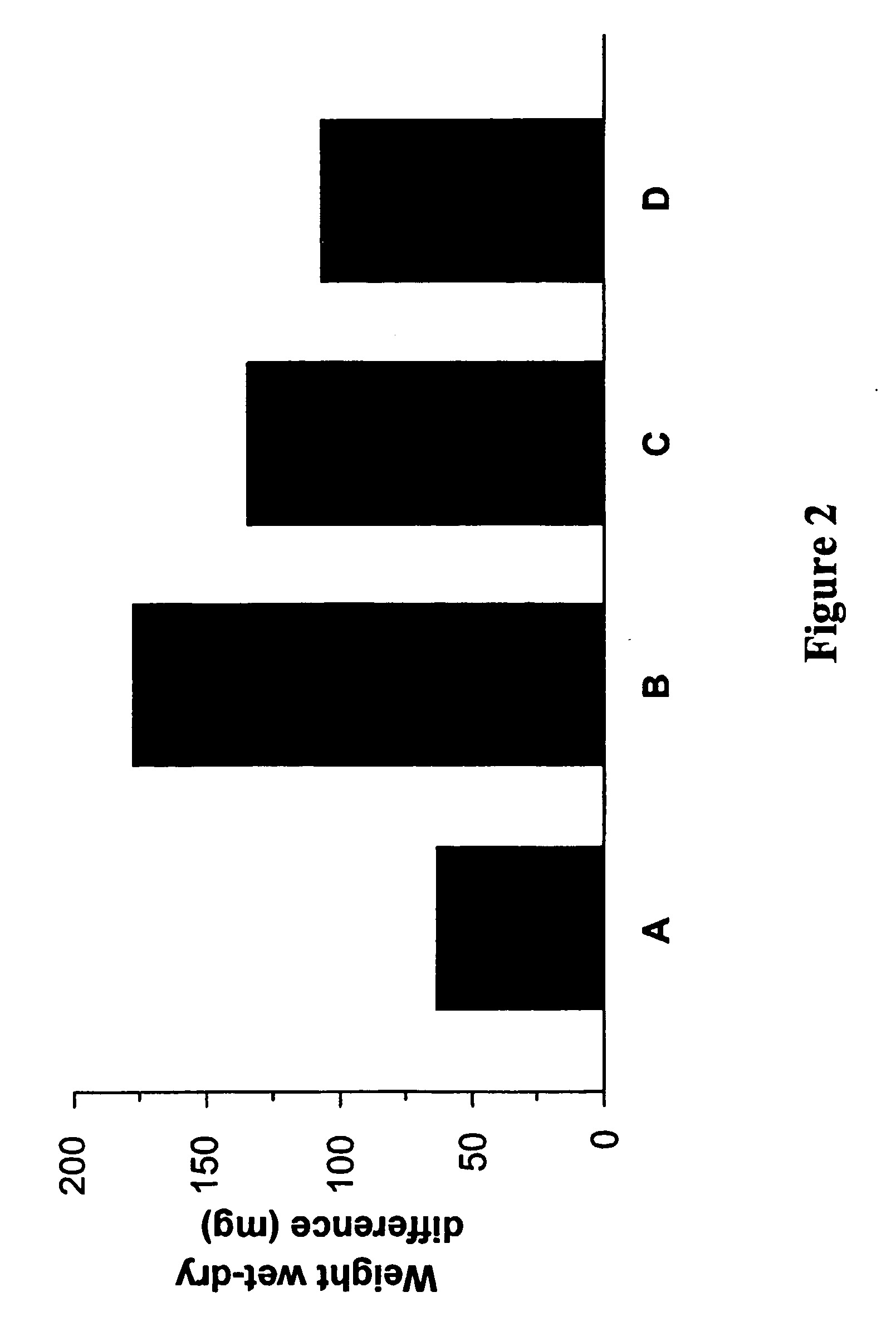Benzazole derivatives for the treatment of scleroderma
a benzazole derivative and scleroderma technology, applied in the field of benzazole derivatives, can solve the problems of no curative treatment of scleroderma, no treatment of scleroderma targeting the fibrotic process, organ failure and death, etc., and achieve the effect of treating and/or preventing scleroderma
- Summary
- Abstract
- Description
- Claims
- Application Information
AI Technical Summary
Benefits of technology
Problems solved by technology
Method used
Image
Examples
example 1
Preparation of 1,3-benzothiazol-2-yl(2-{[4-(morpholin-4-ylmethyl)benzyl]-oxy}pyrimidin-4-yl)acetonitrile (TFA) (Test Compound (A))
Step 1: Synthesis of methyl 4-bromomethylbenzoate
[0183]
[0184] To a suspension of 150 g of methyl p-toluate and 195.5 g of NBS in CCl4 (1.67 L) under N2 at 50° C. was added portion wise over 30 min, solid benzoyl peroxide (5.0 g). There was no exothermic reaction observed. After heating for 2 hours at 50° C., the yellow solution was heated at 65° C. for 6 hrs. There was still some unreacted starting material. The suspension was stirred overnight at 65° C. After cooling to room temperature (r.t), the precipitate formed was filtered off and washed with 150 mL of CCl4 and the filtrate was concentrated to afford a yellow oil that solidified on standing. The title compound, containing a small fraction of starting material was used in the next step without further purification.
Step 2: Synthesis of methyl 4-morpholinomethylbenzoate
[0185]
[0186] To a solution o...
example 2
Determination of Bleomycin-Induced Body Weight Loss
[0195] The objective of the present Assay is to determine the loss of body weight of mice which is usually triggered by bleomycin-induced lung fibrosis.
[0196] Female 10- to 12-week-old C57BL / 6 wild-type mice were intratracheally instilled with bleomycin (3.75 U / kg) dissolved in 10 μl saline to induce the fibrosis in the lungs. The treatment with a test compound started on day 0 and was continued daily—from day 0 (1 hour before the bleomycin instillation) to day 17. The test compound was administered orally at different dosages. Control mice were intratracheally instilled with saline on day 0. The body weight loss was recorded on a daily basis and the results of the determination are graphically represented in FIG. 1.
[0197] All bleomycin instilled mice showed a similar body weight loss until day 5 post-instillation in contrast to saline instilled mice (control) that had stable body weight. From day 5 to day 17, mice treated with a...
example 3
Determination of Bleomycin-Induced Pulmonary Oedema
[0204] Lung fibrotic changes following instillation of bleomycin result from the infiltration of inflammatory cells like macrophages, lymphocytes and neutrophils into the lungs a well as an increase in pro-inflammatory cytokines such as TNFα. The pulmonary oedema is analyzed to determine whether a test compound affects the bleomycin-induced lung inflammation. What is determined is the difference wet / dry of the examined lungs, where high differences indicate a high degree of pulmonary oedema.
[0205] Mice were treated as described in Example 2. The test compound was compound (A) (i.e. 1,3-benzothiazol-2-yl(2-{[4-(morpholin-4-ylmethyl)benzyl]-oxy}pyrimidin-4-yl)aceto-nitrile). At day 17 of instillation, animals were euthanized and both lungs were removed. The right lungs of each mouse were resected, rinsed in 0.9% saline, blotted dry, trimmed free of heart and other extraneous tissue and weighed immediately before lyophilization follo...
PUM
 Login to View More
Login to View More Abstract
Description
Claims
Application Information
 Login to View More
Login to View More - R&D
- Intellectual Property
- Life Sciences
- Materials
- Tech Scout
- Unparalleled Data Quality
- Higher Quality Content
- 60% Fewer Hallucinations
Browse by: Latest US Patents, China's latest patents, Technical Efficacy Thesaurus, Application Domain, Technology Topic, Popular Technical Reports.
© 2025 PatSnap. All rights reserved.Legal|Privacy policy|Modern Slavery Act Transparency Statement|Sitemap|About US| Contact US: help@patsnap.com



